
BIOINORGANIC CHEMISTRY AND APPLICATIONS
Scope & Guideline
Advancing the frontiers of bioinorganic chemistry.
Introduction
Aims and Scopes
- Nanoparticle Synthesis and Characterization:
The journal features extensive research on the synthesis of various nanoparticles using biological methods, including plant extracts and microbial processes, highlighting their structural and functional properties. - Biological Applications of Nanoparticles:
Research articles often explore the biomedical applications of synthesized nanoparticles, including their use in drug delivery systems, anticancer therapies, and antimicrobial agents. - Environmental Remediation:
Many studies investigate the role of nanoparticles in environmental remediation, focusing on their effectiveness in removing pollutants from water and soil, and their potential in addressing heavy metal contamination. - Molecular Interaction Studies:
The journal publishes research that delves into the molecular interactions of metal complexes with biological macromolecules, examining their potential as therapeutic agents. - Green Chemistry Approaches:
A consistent focus on green synthesis methods is evident, promoting environmentally friendly techniques for the production of bioinorganic materials.
Trending and Emerging
- Bioinspired and Green Nanotechnology:
Emerging themes include the use of bioinspired methods for nanoparticle synthesis, which capitalize on natural processes to create environmentally friendly and effective materials. - Nanoparticles in Cancer Therapy:
A significant increase in research focusing on the application of nanoparticles for targeted cancer therapies and drug delivery systems showcases the growing importance of nanomedicine. - Antimicrobial Applications of Nanoparticles:
Research on the antimicrobial properties of various nanoparticles is on the rise, addressing the urgent need for new solutions to combat antibiotic-resistant pathogens. - Environmental Nanotechnology:
The journal is increasingly publishing studies that explore the use of nanoparticles in environmental applications, particularly in the remediation of contaminated water and soil. - Multifunctional Nanocomposites:
There is a growing trend towards developing multifunctional nanocomposites that combine various properties for enhanced performance in medical and environmental applications.
Declining or Waning
- Traditional Metal Complexes:
There has been a noticeable decline in studies focusing on traditional metal complexes and their applications in biomedicine, as research increasingly shifts towards nanomaterials and their multifunctional properties. - Non-Biological Synthesis Methods:
Research utilizing conventional chemical synthesis methods for nanoparticles is becoming less prevalent, with a growing preference for green and biogenic synthesis approaches. - General Reviews without Novel Insights:
The journal has seen fewer general review articles that lack novel insights or applications, indicating a preference for original research that provides new data and findings.
Similar Journals
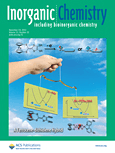
INORGANIC CHEMISTRY
Transforming Ideas into Insights in Inorganic ChemistryInorganic Chemistry, published by the American Chemical Society, stands at the forefront of the field of inorganic and physical chemistry, boasting an impressive impact in the academic community with a 2023 classification in the Q1 quartile across multiple categories including Inorganic Chemistry and Miscellaneous Chemistry. Since its inception in 1962, this esteemed journal has been a crucial platform for disseminating groundbreaking research, innovative methodologies, and comprehensive reviews integral to understanding the complex behaviors of inorganic materials. With a ranking of #12 out of 79 in Inorganic Chemistry and #37 out of 189 in Physical and Theoretical Chemistry according to Scopus metrics, Inorganic Chemistry has established itself as a premier destination for researchers, professionals, and students alike, eager to stay abreast of pivotal developments and trends in the discipline. Despite being a subscription-based journal, its esteemed reputation and critical contributions make it essential for anyone engaged in the exploration of inorganic chemical phenomena. As it prepares to converge into a new era by 2024, the journal continues to embody excellence and innovation, fostering a dynamic exchange of ideas essential for advancing this vibrant area of science.

New Materials Compounds and Applications
Unveiling the Future of Materials Through ResearchNew Materials Compounds and Applications is a pioneering journal published by JOMARD PUBLISHING, focusing on the latest advancements in materials science, particularly in the realms of analytical, inorganic, and organic chemistry. Since its inception in 2019, this journal has quickly established itself as a valuable resource for researchers and professionals seeking to explore innovative compounds and their applications across various fields. With an ISSN of 2521-7194 and an E-ISSN of 2523-4773, New Materials Compounds and Applications is indexed in Scopus, demonstrating its scholarly impact, albeit currently positioned in the Q3 and Q4 quartiles for several chemistry categories. The journal serves as a platform for disseminating research findings and fostering collaboration among scientists in Azerbaijan and beyond. Although it operates under a traditional access model, the journal aims to bridge the gap between theoretical studies and practical applications, making it essential reading for students and professionals looking to stay updated in the dynamic landscape of materials chemistry.
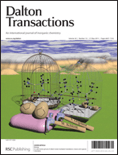
DALTON TRANSACTIONS
Illuminating Pathways in Inorganic ChemistryDALTON TRANSACTIONS, published by the esteemed Royal Society of Chemistry, is a premier journal in the field of Inorganic Chemistry, recognized for its significant contributions to advancing research and scholarship since its inception in 2002. With an impressive Impact Factor and ranked in the Q1 category, it holds a notable position at Rank #21 out of 79 within its Scopus category, highlighting its reputation for excellence and influence in the scientific community. This journal provides a platform for disseminating high-quality research, reviews, and communications related to all aspects of inorganic chemistry, fostering collaboration and innovation among researchers, professionals, and students alike. Although it does not offer open access, its robust selection process and commitment to scholarly integrity ensure that published works are of the highest standard. For those passionate about inorganic chemistry, DALTON TRANSACTIONS serves as an essential resource, fostering a deeper understanding of the field and its applications.
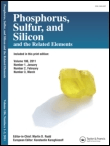
PHOSPHORUS SULFUR AND SILICON AND THE RELATED ELEMENTS
Charting New Frontiers in Elemental ChemistryPHOSPHORUS SULFUR AND SILICON AND THE RELATED ELEMENTS, published by Taylor & Francis Ltd, is a distinguished journal dedicated to advancing knowledge in the fields of Biochemistry, Inorganic Chemistry, and Organic Chemistry. Established in 1989, the journal has carved a niche in the scientific community by offering a platform for the publication of innovative research that explores the chemistry and applications of phosphorus, sulfur, silicon, and related elements. With an ISSN of 1042-6507 and an E-ISSN of 1563-5325, this journal provides access to valuable insights, albeit without open access options. Despite being positioned in the fourth quartile of its categories (Q4), it remains an essential resource for researchers, professionals, and students seeking to expand their understanding of these pivotal elements and their interactions. With a publishing horizon extending to 2024, the journal invites contributions aimed at pushing the boundaries of chemistry and fostering interdisciplinary dialogue.
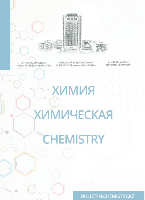
Chemical Bulletin of Kazakh National University
Catalyzing Ideas in the World of ChemistryThe Chemical Bulletin of Kazakh National University is a prominent open-access journal dedicated to advancing the field of chemistry. Published by AL-FARABI KAZAKH NATIONAL UNIVERSITY, this journal serves as a vital platform for disseminating original research, reviews, and innovative findings in diverse areas of chemistry since its transition to open access in 2012. With an ISSN of 1563-0331 and an E-ISSN of 2312-7554, the journal aims to reach a global audience, fostering knowledge exchange among researchers, professionals, and students in the scientific community. The publication seeks to promote high-quality research that contributes to the understanding and application of chemical sciences, particularly in the context of Kazakhstan and the broader Central Asian region. Given the journal's commitment to making research freely accessible, it stands as an invaluable resource for anyone engaged in the study and application of chemistry.
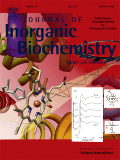
JOURNAL OF INORGANIC BIOCHEMISTRY
Advancing Knowledge at the Intersection of Life and ElementsJOURNAL OF INORGANIC BIOCHEMISTRY, published by Elsevier Science Inc, is a pivotal journal dedicated to exploring the intricate intersections of biochemistry and inorganic chemistry. With an ISSN of 0162-0134 and an E-ISSN of 1873-3344, this esteemed journal has been a key resource since its inception in 1979, converging its insights through impactful research projections until 2024. Currently ranked #18 out of 79 in Inorganic Chemistry, placing it in the 77th percentile, and #144 out of 438 in Biochemistry, at the 67th percentile, the journal showcases a diverse array of studies that contribute significantly to understanding the roles of inorganic compounds in biological systems. Although it does not offer open access, the journal remains integral in fostering rigorous academic discourse among researchers and professionals keen on advancing the field. With a Category Quartile ranking of Q3 in Biochemistry and Q2 in Inorganic Chemistry, it serves as a critical platform for scholars aiming to disseminate cutting-edge findings and stimulate scholarly engagement in this dynamic area of study.

INDIAN JOURNAL OF CHEMISTRY
Advancing Chemical Frontiers with Open Access KnowledgeINDIAN JOURNAL OF CHEMISTRY, published by the NATL INST SCIENCE COMMUNICATION & POLICY RESEARCH (NIScPR), stands as a vital platform for disseminating innovative research and advancements in the fields of organic, inorganic, and physical chemistry. With its inception in 1969, this journal has served the global community of chemists and researchers, contributing significantly to the advancement of chemical sciences in India and beyond. The journal maintains a strong commitment to open access, facilitating widespread dissemination of knowledge, allowing readers from diverse backgrounds to access cutting-edge research without barriers. Although coverage in Scopus has been temporarily discontinued, the journal continues to uphold rigorous scholarly standards, making it an authoritative source for academicians, professionals, and students alike. Readers can expect high-quality articles that reflect the latest developments and discoveries in chemistry, reinforcing the journal's reputation as an essential resource in the scientific community.
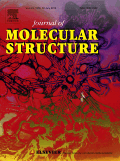
Journal of Molecular Structure
Illuminating the complexities of molecular behavior.Journal of Molecular Structure is a premier publication in the field of chemistry, offering a platform for innovative research that spans analytical, inorganic, organic chemistry, and spectroscopy. Published by Elsevier in the Netherlands, this journal is committed to advancing the understanding of molecular architecture and behavior through high-quality, peer-reviewed articles. With its impressive impact factor and a notable Scopus ranking placing it in the top quartiles among its peers, it serves as an essential resource for researchers, professionals, and students alike. The journal's open access options promote the dissemination of knowledge, ensuring that groundbreaking discoveries reach a broad audience. Established in 1967 and projected to continue through 2025, the Journal of Molecular Structure is vital for anyone engaged in the study of molecular interactions and structural analysis.
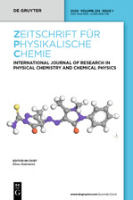
ZEITSCHRIFT FUR PHYSIKALISCHE CHEMIE-INTERNATIONAL JOURNAL OF RESEARCH IN PHYSICAL CHEMISTRY & CHEMICAL PHYSICS
Navigating the Landscape of Physical ChemistryZEITSCHRIFT FUR PHYSIKALISCHE CHEMIE-INTERNATIONAL JOURNAL OF RESEARCH IN PHYSICAL CHEMISTRY & CHEMICAL PHYSICS, published by WALTER DE GRUYTER GMBH, is a highly regarded platform for researchers in the field of physical chemistry and chemical physics. With an ISSN of 0942-9352 and an E-ISSN of 2196-7156, this journal serves as a vital resource for the dissemination of original research, critical reviews, and insightful discussions that span theoretical and experimental investigations. Recognized for its quality, it holds a Q2 classification within the 2023 quartiles of Physical and Theoretical Chemistry and ranks 72nd out of 189 in the Scopus database, placing it in the 62nd percentile. The journal’s extensive publication history, originating from 1943, showcases its long-standing commitment to advancing the understanding of complex chemical phenomena. Although it currently does not offer open-access options, it continues to attract contributions from leading experts worldwide, making it essential reading for professionals, researchers, and students dedicated to pushing the frontiers of chemical science. The journal is located in Berlin, Germany, at Genthiner Strasse 13, D-10785 Berlin, Germany.
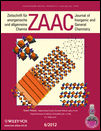
ZEITSCHRIFT FUR ANORGANISCHE UND ALLGEMEINE CHEMIE
Elevating Research Standards in Inorganic ChemistryZEITSCHRIFT FUR ANORGANISCHE UND ALLGEMEINE CHEMIE, published by WILEY-V C H VERLAG GMBH, is a pivotal journal in the field of inorganic chemistry, catering to the needs of researchers, professionals, and students seeking to advance their understanding of this dynamic discipline. With its historical roots dating back to 1892 and a commitment to high-quality research, this journal provides a platform for the dissemination of significant findings related to inorganic substances and their general chemistry. Although currently not an open-access journal, it holds a competitive position with an impact factor placing it in the Q3 quartile of the Inorganic Chemistry category, ranking #57 out of 79 in Scopus. Situated in Germany, this journal not only connects past and present research endeavors but also aims to foster innovation and collaboration within the inorganic chemistry community. Whether you are exploring fundamental concepts or groundbreaking applications, ZEITSCHRIFT FUR ANORGANISCHE UND ALLGEMEINE CHEMIE remains an invaluable resource for advancing chemical sciences.